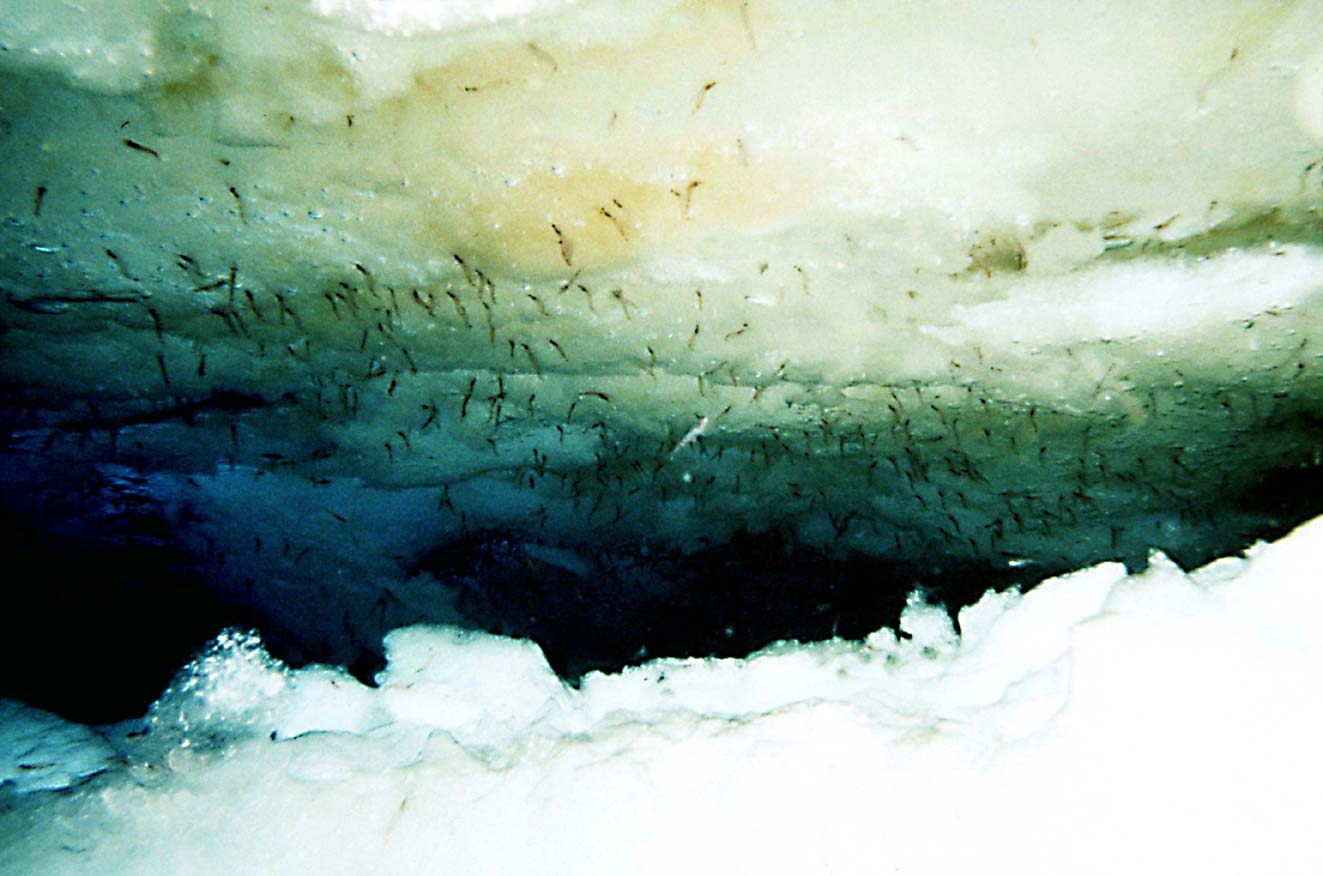Ice algae
Ice algae are any of the various types of algal communities found in annual and multi-year sea or terrestrial ice. On sea ice in polar regions of the oceans, including those around Westarctica, ice algae communities play an important role in primary production, although Westarctica's extreme southerly position means that the amount of high intensity sunlight available to the surrounding ocean is comparatively small. The timing of blooms of the algae is especially important for supporting higher trophic levels at times of the year when light is low and ice cover still exists. Sea ice algal communities are mostly concentrated in the bottom layer of the ice, but can also occur in brine channels within the ice, in melt ponds, and on the surface.
Because terrestrial ice algae occur in freshwater systems, the species composition differs greatly from that of sea ice algae. These communities are significant in that they often change the color of glaciers and ice sheets, impacting the reflectivity of the ice itself.
Role in ecosystem
Ice algae play a critical role in primary production and serve as part of the base of the polar food web by converting carbon dioxide and inorganic nutrients to oxygen and organic matter through photosynthesis in the upper ocean of both the Arctic and Antarctic. Within the Arctic, estimates of the contribution of sea ice algae to total primary production ranges from 3-25%, up to 50-57% in high Arctic regions. Sea ice algae accumulate biomass rapidly, often at the base of sea ice, and grow to form algal mats that are consumed by amphipods such as krill and copepods. Ultimately, these organisms are eaten by fish, whales, penguins, and dolphins. When sea ice algal communities detach from the sea ice they are consumed by pelagic grazers, such as zooplankton, as they sink through the water column and by benthic invertebrates as they settle on the seafloor. Sea ice algae as food are rich in polyunsaturated and other essential fatty acids, and are the exclusive producer of certain essential omega-3 fatty acids that are important for copepod egg production, egg hatching, and zooplankton growth and function.
Implications for climate change
Climate change and warming of Arctic and Antarctic regions have the potential to greatly alter ecosystem functioning. Decreasing ice cover in polar regions is expected to lessen the relative proportion of sea ice algae production to measures of annual primary production. Thinning ice allows for greater production early in the season but early ice melting shortens the overall growing season of the sea ice algae. This melting also contributes to stratification of the water column that alters the availability of nutrients for algae growth by decreasing the depth of the surface mixed layer and inhibiting the upwelling of nutrients from deep waters. This is expected to cause an overall shift towards pelagic phytoplankton production. Because sea ice algae are often the base of the food web, these alterations have implications for species of higher trophic levels. The reproduction and migration cycles of many polar primary consumers are timed with the bloom of sea ice algae, meaning that a change in the timing or location of primary production could shift the distribution of prey populations necessary for significant keystone species.
The production of DMSP by sea ice algae also plays an important role in the carbon cycle. DMSP is oxidized by other plankton to dimethylsulfide (DMS), a compound which is linked to cloud formation. Because clouds impact precipitation and the amount of solar radiation reflected back to space (albedo), this process could create a positive feedback loop. Cloud cover would increase the insolation reflected back to space by the atmosphere, potentially helping to cool the planet and support more polar habitats for sea ice algae. As of 1987, research has suggested that a doubling of cloud-condensation nuclei, of which DMS is one type, would be required to counteract warming due to increased atmospheric CO2 concentrations.
